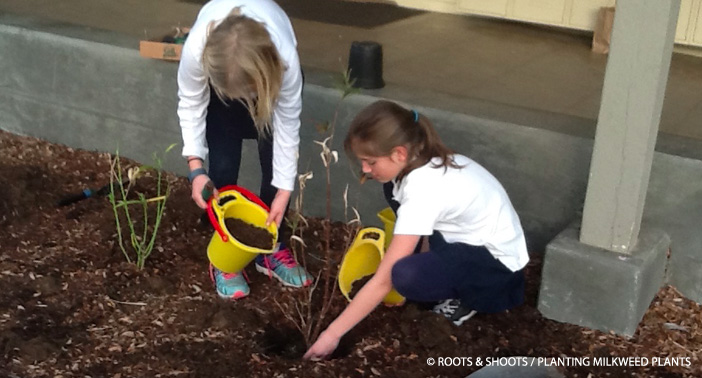How does an organism that can’t move spread out across a continent? Plants have struggled with that dilemma since their evolution. Some let the wind or water carry their pollen and seeds out into the world. Others prefer to get a little help from their animal neighbors.
That’s where pollinators come in.
Pollinators are a crucial part of nearly every ecosystem. Most pollinators are beneficial insects — butterflies, bees, wasps, beetles, moths, etc. — that pick up pollen grains when they land on a flower in search of nectar and transport it to the next flower they visit. In fact, nearly 75% of flowering plants rely on these insects. Some plants have also evolved to rely on small vertebrates like hummingbirds or bats. These creatures are considered keystone species, meaning that they perform vital ecosystem services and, without them, an ecosystem can start to collapse.
Pollinators are not just important to wild ecosystems; however, they are also essential to the agriculture industry. According to the Pollinator Partnership, pollinators produce an estimated $20 billion worth of products every year. Almost a third of all the food and beverages we consume were produced in part by pollinators.
Unfortunately, nature’s little helpers could use a helping hand themselves right now. Pollinator species are under attack from habitat loss, invasive species, pesticide usage and climate change. Air pollution creates problems for bees and other pollinators that rely on scent to find flowers, and light pollution can be harmful to moths who are attracted to artificial lights. New forms of disease are also impacting honeybee colonies, causing collapse.
In recognition of the serious threats facing pollinators, the US Department of Agriculture and Department of the Interior designated June 20 to 26 as National Pollinator week. All this week, people will be celebrating the important work that these creatures do, and spreading the word about what can be done to protect them. Participants in Jane Goodall’s Roots & Shoots program certainly know the importance of preserving pollinating species. In honor of National Pollinator Week, we’ve shared some of the great projects that Roots & Shoots groups are doing to protect our planet’s pollinators.
A Hawaiian Roots & Shoots group is doing their part to protect pollinators by raising awareness about their importance in two agricultural communities. They are focused on the important issues of protecting both wild and landscaped habitat and lessening use of neonicitinoids — a group of toxic insecticides. In order to accomplish their goal, this group will host two “Pollinator Celebrations” at their local farmers’ markets complete with bee and butterfly showcases. They are also hosting an informational display at their local library and collecting citizen science data on pollinators that they hope to map the outcome of, in order to inspire change on the household, community and policy levels.
Another US group is working to save pollinators by creating habitats for birds, bees and butterflies. The goal of the “Pollinator Savers” is to create several habitat areas for various pollinators through research, planning and creative design. They also hope to write letters to companies in their area, educating them on the importance of pollinators and influencing them to do something to help. To spread their mission of saving pollinator species, this group wants to supply others in their community with the resources to get started creating their own pollinator habitats.
This Roots & Shoots project focused on supporting and sustaining the monarch butterfly population by planting milkweed plants. These plants are a favorite food of the monarch caterpillars and their presence in the ecosystem is crucial to ensure the caterpillars are able to complete their life cycle. The milkweed planted by this group are growing well in their new environment and eggs have already been spotted on some of the leaves. They will continue to monitor the plants to see if the caterpillars hatch, form chrysalises and become butterflies.
Visit the Roots & Shoots website to learn about other projects dedicated to helping people, animals and the environment.





